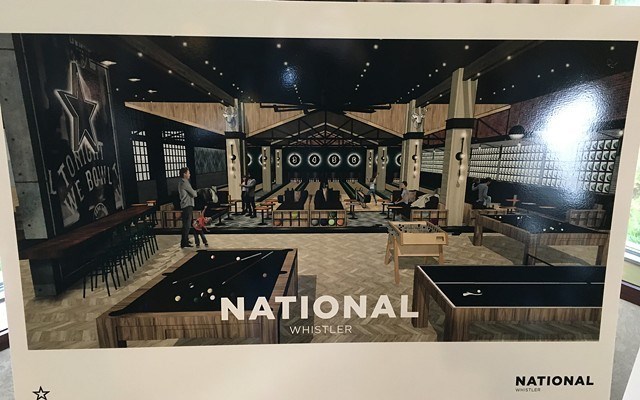It should come as a surprise to absolutely no one who has spent even one blustery afternoon in this great, vast country that one of Canadians’ favourite pastimes is discussing the weather. This isn’t just conjecture, either: according to a 2014 report by Influence Communication, Canadians love to talk about the weather more than anyone else in the world, with weather-related news stories regularly dominating the headlines.
This is especially true in Whistler, where the ski hill continues to influence practically every single component of our community, and where scores of locals can still get away with calling off work for a powder day whenever it dumps prodigiously.
So, in the longstanding, illustrious tradition of Whistlerites talking all things weather, we are going to revisit a question this week that has only seemed to grow in significance in recent years: does Whistler need to beef up its “weather-independent” offerings?
The short answer, for my money, is a resounding yes. For a variety of reasons both local and global in scope—our climate-shortened ski season; rising unaffordability making the sport less accessible; stagnant youth involvement in snowsports; a ski-resort clientele shifting more towards the novice than the hardcore ski bum—the average visitor to Whistler is no longer drawn exclusively to Whistler Blackcomb. Yes, it is and surely always will be the No. 1 driver of tourism here (at least until climate change has other plans), but show me a one-resource town that has ever sustained over the long term without diversifying, and I’ll show you a unicorn riding a rainbow. And, let’s face it, there is plenty room to diversify here in Whistler.
The reality is, once they’ve kicked off those ski boots and finished their laps for the day, there isn’t much for the eager visitor to do in Whistler besides eat and drink, which is not for nothing, of course, given our lively après culture, but even that can get old pretty quick (especially if you don’t imbibe and/or don’t want to take out a second mortgage to afford dining out here).
Not that there isn’t a smattering of non-ski-related forms of entertainment on offer: snowshoeing, ziplining, the Squamish Lil’wat Cultural Centre, the Audain Art Museum, the Meadow Park Sports Centre, the Whistler Escape Room, Village 8, what else? Um … the library is lovely. All great options for an afternoon or two, but not exactly the robust slate of activities you might expect from a world-class resort and destination.
So, what gives? Even ski towns a fraction of the size and reputation of Whistler has seemed to catch on to this weatherproofing trend quicker than we have. Banff has for decades now been home to the Banff Centre for Arts and Creativity, a world-renowned learning centre and artistic residency that offers a full slate of cultural programming year-round, from workshops to art exhibits to an annual film festival. Park City, Utah also houses its own film festival—Sundance—that has evolved into the largest independent film festival in the U.S. Park City also counts The Egyptian Theater, an historic cultural hub that is not only the premier location for Sundance’s biggest screenings, but serves as the community’s home for live theatre, concerts, dance, and other performances year-round. Then you’ve got Aspen, which has come to host some of the world’s leading thinkers and speakers, primarily though the non-profit, Aspen Institute, and its popular Aspen Ideas Festival.
Whistler does of course offer all of these kinds of events—the Whistler Film Festival, a cinephile’s dream, returns next month, for instance—but rarely to the frequency or level of demand, tourism-wise, that these other, more established draws do elsewhere. Part of that has got to do with Whistler’s relative young age; we have only been around as a ski resort since the ’60s, by which time the Banff Centre had already been operating for three decades, for example.
And it’s not just about one-off or even regular events, either. More weather-independent infrastructure would go a long way towards filling both the tourist’s and the local’s schedule beyond ripping it on the hill or filling up on après-hour meal specials. But there seems, at least historically speaking, a certain unwillingness to make those kinds of options a reality. Prior to Vail Resorts’ assuming operation of Whistler Blackcomb, plans were announced, in 2017, for an indoor water park, roller coaster, and night skiing, part of the resort’s ambitious, $345-million “Renaissance Plan.” (The plan itself was divisive in the community, with some fearing it would further corporatize Whistler, turning it into Disneyland North.) While Vail has stuck with some components of that plan, most significantly, the planned on-mountain and lift upgrades that were included as part of Renaissance, some of the glitzier plans intended to broaden the resort’s recreational offerings have been scrapped.
Then there’s the infamous bowling alley proposal brought forth by a Calgary company that had pitched adding a 600-seat gaming centre and restaurant to the location adjacent to Village 8 and the Pan Pacific. Drawing concerns from some in the business community about its massive size and potential for driving down prices (which, in a town awash with $18 cocktails, is something), proponent Concord Entertainment Group eventually backed off the plan. But the mostly positive response it got from entertainment-starved locals is all the proof you need something like it is needed here.
The pandemic showed firsthand what Whistler looks like without its economic engine revving, and as the wider ski industry reckons with the ravaging effects climate change and a stagnant consumer base could have on the future of the sport, Whistler can’t afford to ignore its weatherproofing potential much longer.





